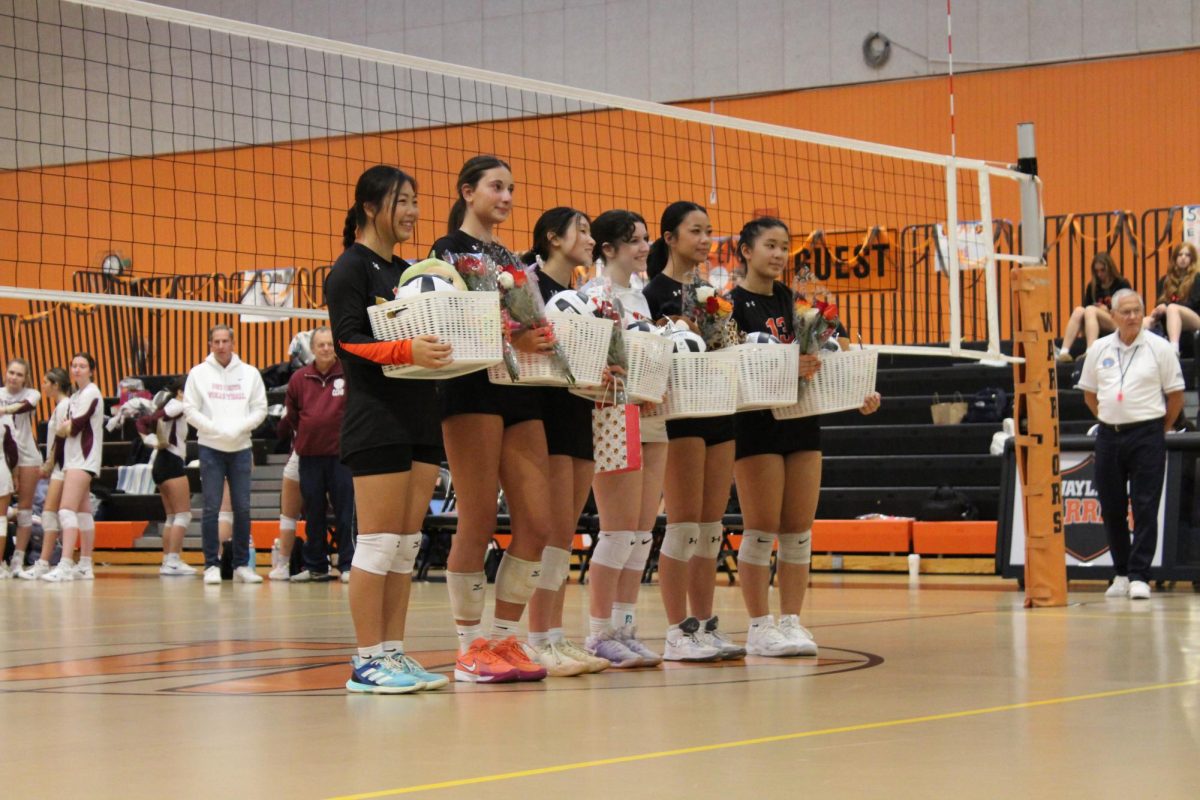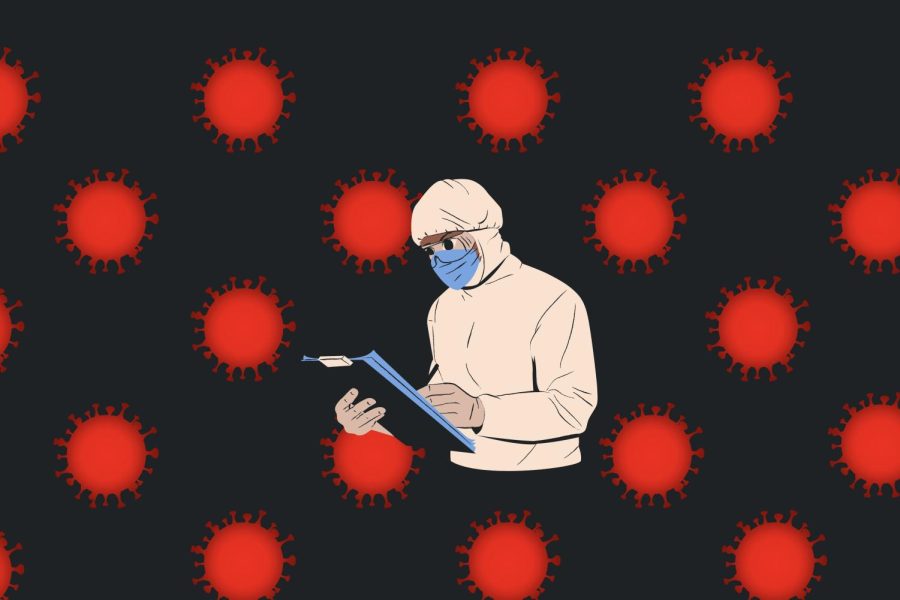Understaffed and overworked: the nursing profession is going extinct before our very eyes
Credit: Delia Caulfield
WSPN’s Delia Caulfield discusses the national nurse shortage and the negative implications of understaffing hospitals.
February 16, 2022
When you think of the word hospital, what is the first word that comes to mind? Maybe it’s the packed waiting room, filled with dozens upon dozens of people waiting in anticipation to be told a variety of news, good or bad. It could be the place where you spend the majority of your time, either cheering on another to get better or fighting your own personal battle within the walls of your cubic room. Or maybe it’s the place where you’ll say your first hello to a new life or your last goodbye to an old one.
Currently, hospitals are the last place I want to be.
Whatever your perception of a hospital has been in the past has mostly likely been notably altered since the pandemic struck our world in 2020. Instead of hospitals being a place correlated with a variety of things, they are now overshadowed with one thing: the coronavirus.
For the past two years, nurses have been tested physically and psychologically in working through the jarring conditions of COVID-19. The immense hazards of the virus are one thing, but the horrific chain reaction of the effects of the virus is what has been proven lethal. A lack of Personal Protection Equipment (PPE), such as masks, gloves, N95 respirators, gowns and eye protection, has been proven detrimental to hospital workers, who have been forced to work grueling shifts with limited protection from the virus.
Just a couple of weeks ago, cases were at an all time high, with the omicron variant of the virus infecting around 652,000 people per day in the United States. Although this variant typically has less harmful side effects and a significantly lower death rate than the original SARS-CoV-2 strain, it has proven itself to be remarkably more infectious, with cases spiking around 300% higher than they were just months ago.
With the introduction of this new variant and its outstandingly high infection rates, it’s apparent that the virus isn’t completely going away any time soon.
Although we may not realize it, corruption within the healthcare profession has been an ongoing issue, and it’s only getting worse. For years, hospitals across the U.S. have been understaffing nursing positions in order to save money. A recent study concluded that currently, hospitals are employing 2% fewer people than they were at the start of the pandemic. This isn’t because cases are declining. Instead, this is due to the fact that hospitals are doing everything in their power to make maximum profit. When hospitals keep less nurses on staff, it keeps cost lower. This completely disregards the physical and emotional toll that understaffing takes on nurses.
According to the The American Nurses Association (ANA), nursing will be the most vacant profession in 2022 in the United States. This is due to the nationwide shortage of registered nurses, which has grown immensely since the start of the pandemic.
At first thought, it seems surprising that nursing, a seemingly popular profession, would be in desperate need of workers. However, the demanding and draining culture surrounding this profession makes it unworthy of pursuing, as the negative sides of the job seem to outweigh the positives.
A typical hospital shift for a registered nurse is around 12 hours long, which seems undesirable to begin with. In addition, the treatment of nurses by the hospital itself is vastly unjust and often overlooked. Many hospitals in the U.S. disregard rest shifts for nurses when there are a high number of patients, forcing them to work straight shifts with little time to rest.
In addition, many often neglect just how many nurses have lost their lives while working through the dangers of the COVID-19 pandemic. It was recorded that more than 1,140 nurses in the U.S. died during the first year of the pandemic due to being on the front lines. Moreover, more nurses have died after being exposed to COVID-19 at work than any other healthcare worker.
These numbers are absurd. People often wonder why the number of practicing nurses rapidly declines each year, and this is the reason. No one should go to work every day in fear of losing their lives due to the sickness that constantly looms through the air around them. However, this is a harsh reality for nurses across the country, and one that not many are willing to endure.
The main issue is understaffing. There have been no federal mandates for a safe nurse to patient ratio, which is vastly detrimental to both nurses and patients’ physical and mental well-being.
Think of it in terms of school. For example, a class of five students will have a more personalized curriculum because the teacher can focus on each student’s academic needs. On the other hand, in a class of 40 students, the curriculum is more general and isn’t catered towards every student’s brain to ensure all are understanding the material. It’s easier to slip through the cracks when there are dozens of others who need to be cared for as well.
In simpler terms, the less patients a nurse is assigned to, the more personalized care they will receive. Experts say that for every additional patient that a nurse takes on, the other patients are 7% more likely to die in the hospital, furthering the narrative that less is definitely more.
Certain states, such as California, have proposed bills to ensure that hospitals have safe and reasonable nurse to patient ratios. However, states such as Massachusetts have yet to collectively pass a law to guarantee that nurses are operating under safe ratios.
Lawmakers need to take a long and hard look at themselves and make a significant change, before it’s too late and nurses go extinct.















![This year, the Wayland team is made out of a JV team and a varsity team. There is a wide range of grades from eighth grade to twelfth grade that make up the teams. " [What] I will miss most [about the seniors] is their willingness to be involved," sophomore Mackenzie Grogan said. "Whether it was with school drama or referee frustration, they were really good at listening and giving good advice."](https://waylandstudentpress.com/wp-content/uploads/2025/10/8F0FD331-F005-4C3F-9F77-402D1C1953D6_1_201_a-1200x800.jpg)











